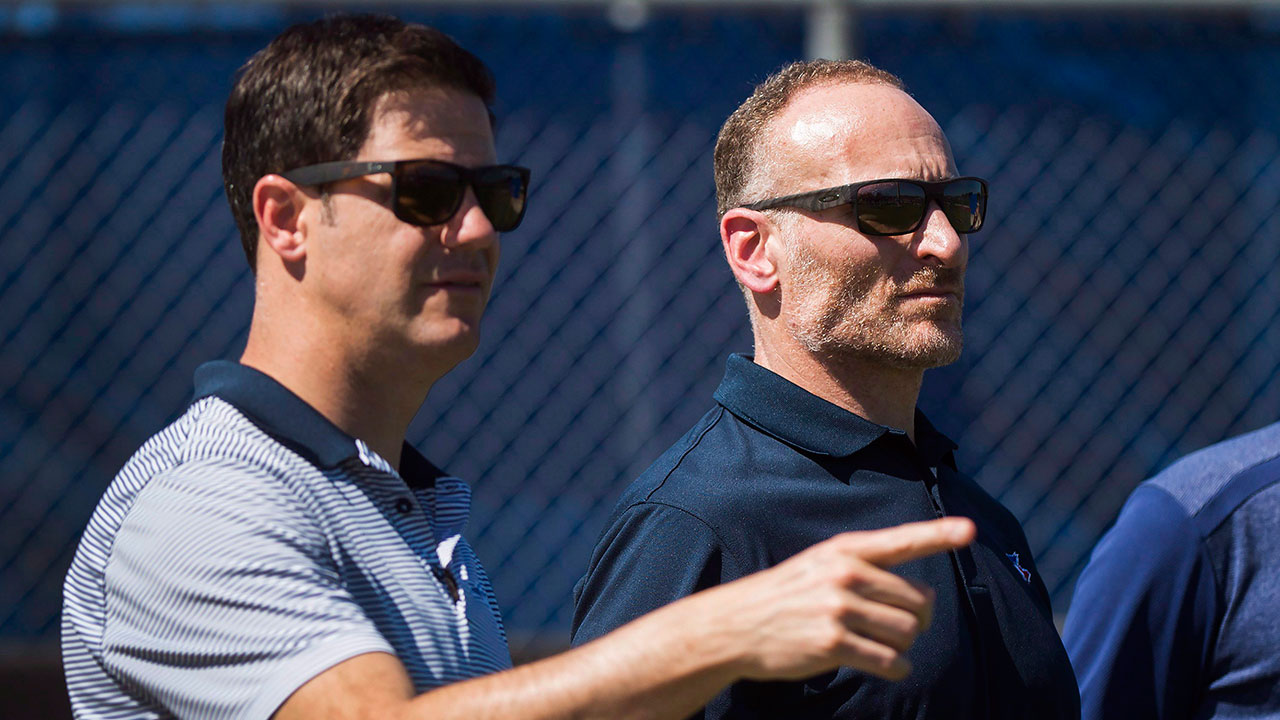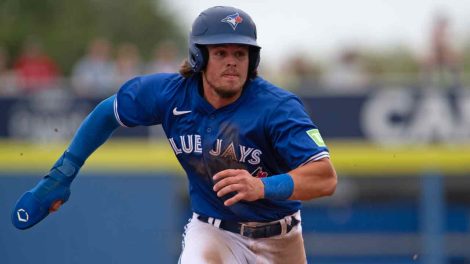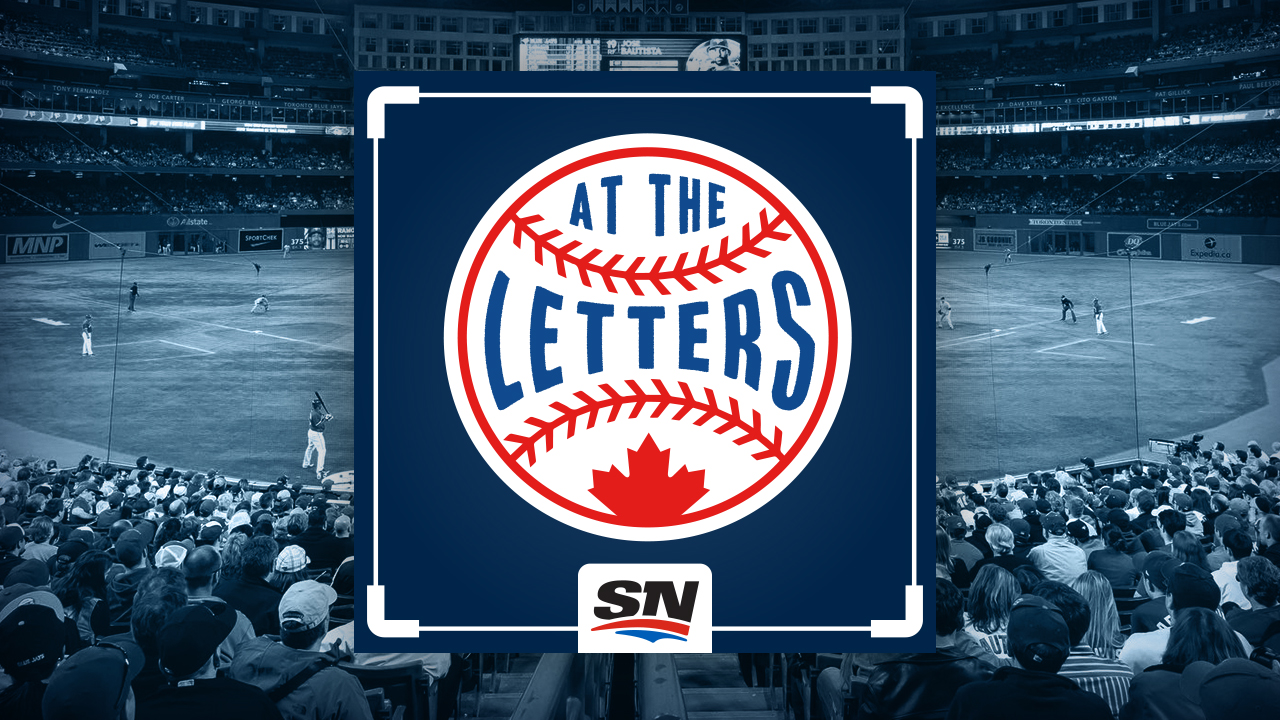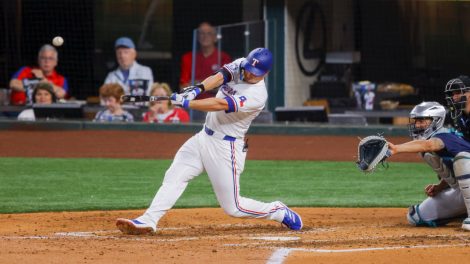TORONTO – Space is at a premium at Shane Farrell’s Phoenix home, so the need for a place to set up his end of the Toronto Blue Jays’ virtual draft room forced the amateur scouting director to make a tough decision.
Younger brother Luke, a Texas Rangers pitcher, moved in during spring training and the COVID-19 shutdown unexpectedly turned his stay into an indefinite one. That wasn’t a problem until the ongoing pandemic prevented the Blue Jays — along with the other 29 teams — from setting up their annual draft room in the team offices.
Out of options, about a month ago, “I kicked him out of his room and I made a little makeshift office here,” Farrell says with a chuckle. “Luke ended up renting a place in Phoenix. I think he was getting tired of a screaming baby to deal with.”
Abnormality is, of course, the new normal, which is why Farrell launched Tuesday the final two weeks of Blue Jays preparation from Luke’s old room, while he and his wife trade-off care for their eight-month-old daughter.
Improvisation has come in all shapes and sizes for a 2020 draft that will be conducted virtually and shortened to five rounds from the usual 40 because of the coronavirus, amplifying the risk in a process that very much remains an inexact science.
From scouting adaptations forced by the cancellation of spring seasons, to the upending of established methodology, everything this year has been much harder than usual. The added challenge for Farrell, who turns 31 on Thursday, is that he’ll be running his first draft while also holding a leverage spot with the fifth overall pick.
Given the opportunity, and the circumstances, there’s an interesting debate to be had over whether the Blue Jays are better off taking on more risk for more potential reward, knowing they’re unlikely to pick this high again for a while, or play it a bit safer, surrendering some upside for a player likelier to become a big-league contributor.
“There’s obviously risk associated with every draft pick,” says Farrell. “It becomes a little heightened just with how high we’re picking this year, but it really shouldn’t change too much of our overall process or how we’re viewing players as a whole. Weighing probability versus upside is always the balance. You can look historically at different demographics or areas, position-wise or anything like that, that tend to be a bit riskier or carry a less likely chance of reaching their ceiling. There are certainly outliers, too, to every demographic. But betting on the rule and not the exception is typically the way to approach it.”
Such an approach would be in line, philosophically, with recent Blue Jays drafts in which they’ve largely tried to diversify their portfolio of picks.
In 2016, the first draft under GM Ross Atkins and president and CEO Mark Shapiro, the club played it safe with its first two picks, selecting right-hander T.J. Zeuch and outfielder J.B. Woodman, both out of college, before taking a big swing with their third choice, choosing shortstop Bo Bichette, now a franchise cornerstone, out of high school.
The Blue Jays went the college route with their first pick again in ’17, taking infielder Logan Warmoth, and then set themselves up with a potential high-impact choice with the compensatory pick for Edwin Encarnacion’s departure at No. 28, landing ace prospect Nate Pearson out of junior college.
An outlier draft came in 2018 when the Blue Jays manipulated their signing bonus pool to land high-school teammates Jordan Groshans and Adam Kloffenstein with their first and third picks (collegiate outfielder Griffin Conine was sandwiched between them in the second round).
Then last year, the Blue Jays went back to the college ranks with their first pick, landing big right-hander Alek Manoah at No. 11 before making a pair of upside plays in right-hander Kendall Williams and fellow high-schooler Dasan Brown, a speedy outfielder from Oakville, Ont.
What they’ll do under Farrell, who inherited one of the industry’s larger scouting staffs established by Andrew Tinnish and further developed by Brian Parker and Steve Sanders, will be intriguing to watch.
Recent mock drafts by Baseball America and Keith Law of The Athletic link the Blue Jays to Georgia right-hander Emerson Hancock, while MLB.com has them taking high-school outfielder Zac Veen.
“Really, it’s just letting the draft class speak to you a little bit,” says Farrell, speaking of the club’s approach in general terms. “I don’t think you want to go in premeditated in terms of saying, ‘Hey, we pick in this range of the draft, we have to follow this avenue, or this sort of risk demographic.’ In a lot of cases it may be easier to take that big swing towards the backend of a draft because there’s less probability when you’re picking there as it is.
“There are certainly times to take a shot but focusing on the player pool, not trying to force anything, is really the key.”
Farrell will be leaning on his experience with the Chicago Cubs, where he served as an amateur scouting assistant, area scout and West-Coast crosschecker, in navigating the next couple of weeks and the June 10-11 draft.
Jason McLeod, the Cubs’ senior vice-president player personnel, Matt Dorey, senior vice-president player development, and Tim Wilken, the Arizona Diamondbacks executive who had been with the Cubs, are among those who have influenced his career.
All those lessons have been drawn upon as the Blue Jays adjusted to the lack of current games to scout. They watched more video, worked the networks of not only the scouting department, but those of player-development staff not as busy as usual, and doubled-down on the info already gathered by area scouts, trying to fill in any information gaps as best they can.
“We’ve had to use a lot of resources and get a little creative in how we collected information this year,” says Farrell. “Heading into the spring we typically know strengths and weaknesses and things we need answered about the player. Obviously it got cut short so we’re not able to have everything answered. But we feel like we’re in a good place with what we have.”
Their success over the next couple of weeks of pre-draft meetings hinges on that. But in what’s quickly become a mantra for the times, all the Blue Jays can do is make the best of what they’ve got.
[relatedlinks]










